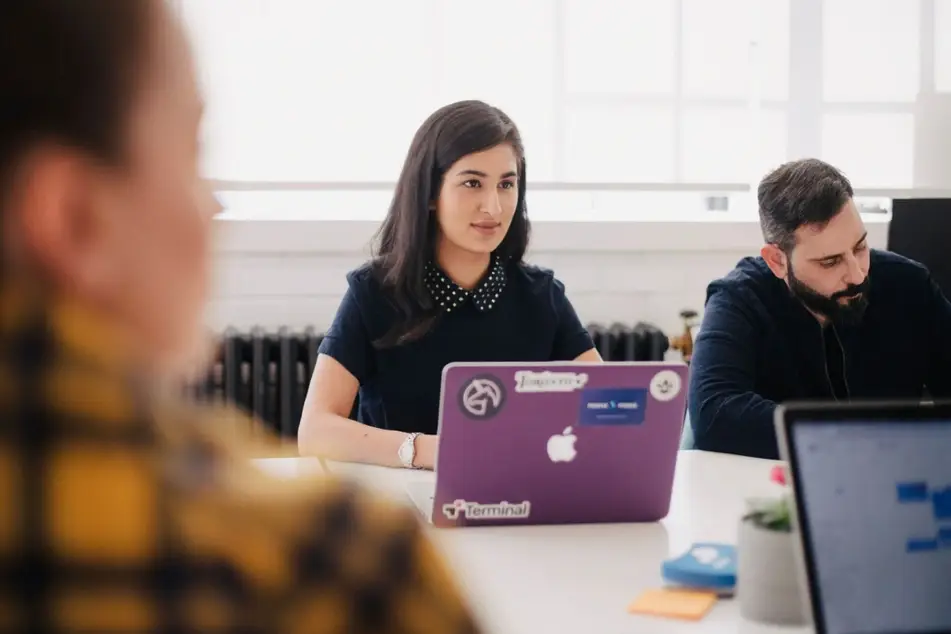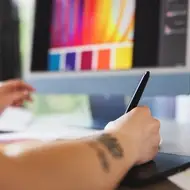How to Recognize & Conquer Unconscious Bias in the Workplace

Everyone has some form of implicit bias; we absorb received notions about race, class, gender, ability, ethnicity, and sexuality from a very young age. Implicit bias shows up in deep-down prejudices and stereotypical assumptions we don’t know we hold. Though they’re not in our conscious minds, these biases still affect how we interact with colleagues, shaping our organizational culture.
Many organizations are working hard to root out discrimination at all levels; tackling unconscious bias in the workplace is an ongoing part of this work, and it starts internally.
Where does unconscious bias come from?
Bias itself isn’t always negative—it’s a useful survival mechanism that helps us filter information based on what’s important to us. The quick perceptive shortcuts people make daily, like telling friends and strangers apart, require some form of bias.
Implicit biases are frequently shaped by a need for the familiar; however, before we know it, our unconscious may decide what’s "safe" or "acceptable." This split-second decision-making can be helpful in a dangerous situation. But at work it can show up in subtler, damaging ways.
If you’re a white woman looking through resumes for a potential new hire, you almost certainly don’t intend to favor candidates who have names you associate with white people. But in a 2004 University of Chicago study, that’s just what happened: employers across Chicago and Boston received resumes from equally-qualified (fictional) candidates: some candidates were randomly assigned first names associated with white people, while others were given first names associated with Black people. The white-sounding names earned 50 percent more callbacks in every industry—even when their resumes showed significantly less experience. A similar 2017 experiment in London, UK, revealed that with identical resumes, "Adam" was three times more likely than "Mohamed" to get an interview.
That’s the sneaky part of implicit bias: it often directly contradicts the beliefs and values people claim to hold. Even when an organization puts diversity and inclusion in its mission statement, biases can still sneak their way into everyday decisions.
Types of unconscious bias
Here are a few examples of bias that might shape our behavior:
- Affinity bias: We favor people like us. When we meet people with the same background, experience, or personal traits, we feel comforted and safe. On the flip side, we avoid people who are unfamiliar or different in any way—effectively "other"-ing them and shutting them out, even if we have no idea this is what we’re doing. The resume readers in the experiments above, for example, probably didn’t intend to make racially biased hiring decisions. Instead, white hiring managers at majority-white organizations may have gravitated toward names that sounded familiar. The impact, however, showed a persistent racial bias that often keeps Black candidates from employment and advancement.
- Attribution bias: We tend to excuse our own behavior as a response to circumstance. But when others behave the same way, we assume it’s a part of their character and personality. If a colleague is behind on her work, for example, you may think she’s unable to handle the job—but if you’re in the same position, you can recognize the factors stressing you out. This leads us to make unfair assumptions about others that can, in turn, lead to unfair treatment.
- Confirmation bias: We agree with evidence that confirms or backs up our initial beliefs and overlook any evidence that challenges these beliefs. This can be an unconscious process, too. For example, many of us have absorbed media stereotypes that tell us people in certain groups are less capable or talented than others. Even if we know these stereotypes are untrue, we may find ourselves surprised to meet people who defy them.
Beating unconscious bias in the workplace
Implicit biases can be unlearned once they’re recognized. As a starting point, think about any experiences that might have shaped your perceptions of others—many psychologists believe unconscious bias emerges from lived experience. Maybe you grew up in an insular community without much diversity, or you dealt with prejudice and discrimination yourself. Everyone’s narrative will be different.
You’ve probably made some assumptions or internal "shortcuts" about groups of people along the way. The next step is to think of ways to deliberately challenge these assumptions.
Substitution can be a useful technique to check yourself for bias. Consider whether you’d still respond the same way to a colleague if they shared your gender, racial background, age, or other characteristics. Would you respect them more or feel more confident in their abilities?
Individuation, or seeing people as individuals first, also helps. No group is a monolith, and people within each group have diverse opinions, beliefs, values, and skills. This doesn’t mean you should ignore vital aspects of a person’s identity—just don’t expect them to speak for every member of their group.
Slowing down is another effective way to clear bias from your decision-making. The more anxious and pressed for time you become, the more likely you are to fall back on unconscious bias when making choices. When you’re tired or stressed out, that might not be the best time to make important work decisions that involve others. Even a few extra minutes of thoughtfulness, for instance, can help reduce bias in hiring.
Meanwhile, you should strive to remain open to learn some uncomfortable facts about your own unconscious. The Implicit Association Test from Harvard is one of the best-known tools for getting implicit bias out in the open. The creators of the test admit you might not agree with the results; no one wants to hear that their automatic preferences reveal racism, ageism, misogyny, or homophobia. But once you know the prejudices you’ve internalized, you can watch out for them more closely in your thoughts, words, and actions.
Another interesting questionnaire, especially if you work with international populations, is the Intercultural Development Inventory that tests your response to cultural difference.
Understand systemic biases in the social-impact sector
As you may know, bias isn’t just an individual failing but a structural, systemic one. The National Equity Project distinguishes between two ways to consider your own biases: "mirror work," or reflecting inward about our own biases; and "window work," or looking outward at how the institutions and systems around us keep inequality in place.
The first "window" may be your own workplace. Inclusion and equity aren’t just about who is in the room, but about who makes decisions and who has social power. An "organizational unconscious" can uphold power structures in a way that protects structural biases, whether individuals hold these biases or not. For instance, a workplace leave policy might not have many options for new parents. Since this lack of options disproportionately impacts people who choose parenthood, the policy subtly favors other workers.
Another common practice is hiring based on employee referrals, which seems smart at first glance—job placement is one of the goals of networking. But if you’re hiring people you know, you’re more likely to bring people who share your identity on board, and they’re likely to do the same, keeping the organization homogeneous for years.
Unconscious bias also shows up in the unspoken expectations people share. Maybe the unofficial dress code favors a certain gender presentation, or planned activities assume a level of financial freedom or physical ability.
And a close-knit organizational culture is often more dominated by members of the "in-group" than employees realize. If new staff members bring diverse representation to the table, they may feel pressure to conform to the culture as it already exists rather than suggest innovations. In the long run, they can grow disillusioned and leave the organization.
Leave your comfort zone
Your regular thought patterns and behaviors may be comfortable (familiarity is comfort!), so don’t be surprised if dismantling bias feels a little awkward. Over time, like any other practice, it’ll get easier.
One step for many of us may be to think about our professional networks, formal and informal. Who are you surrounding yourself with? When you choose potential career and school mentors, do you pick people whose experiences line up neatly with your own? What about the people you rely on for professional advice, or the staff members of organizations you apply to as a job seeker?
If you’re in a majority group and everyone in your network resembles you, it’s time to expand that network a little. Look online for professionals in your industry, or faculty in your field, who come from marginalized groups. Make an effort to learn more about their work. Unless you know and have a good working relationship with someone, don’t reach out to them for mentoring—keep boundaries intact—but seek out their perspectives.
Check your media habits
Another way to tackle implicit bias is to take a thoughtful look at your media sources. Even the simplest images, like stock photos chosen for a website, reinforce or defy stereotypes. The websites we rely on for news and information have the same effect.
Get in the habit of reading news articles by writers who belong to minority groups, or following minority-run social media pages if you’re active on social media. You’ll probably learn some things that will surprise and challenge you.
Finally, when someone tells you they’ve been harmed by unconscious bias, believe them. It’s sometimes easy to miss bias if you’re not the one affected. This might mean acknowledging you’ve done harm, apologizing, and correcting your behavior moving forward.
***
How has your organization addressed unconscious bias? Let us know on Facebook.
Amy Bergen is a writer based in Portland, Maine. She has experience in the social impact space in Baltimore, Maryland, the educational museum sphere in Columbus, Ohio, and the literary world of New York City.






